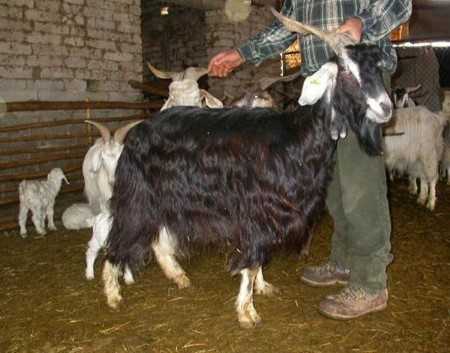 |
| Source: Agraria.org. |
The resilient Capestrina Goats, believed to have originated amidst the rugged landscapes of the Lepini, Ausoni, and Aurunci mountains in the Latium region of Italy, embody a distinctive blend of strength and grace. Nestled within the provinces of Rome, Frosinone, and Latina, these goats have carved out their niche in the pastoral tapestry of the Italian countryside.
Often found in the company of Ciociare and Monticelliane goats, or their hearty hybrids, Capestrina goats are a rare sight, treasured for their unique qualities and contributions to local husbandry practices.
Standing tall at an average height of 93-94 cm at the withers for males and 74-79 cm for females, with corresponding weights of 85kg and 46-53 kg respectively, Capestrina goats exude a sturdy and robust demeanor. Their sleek black or seal black coats, accentuated by light-colored limbs and occasional head patterns, lend them an air of timeless elegance.
Both males and females sport majestic horns, adding to their striking appearance and signaling their innate resilience. While they are primarily bred for the production of kids, prized for their tender meat and sought after in local markets, Capestrina goats also contribute to milk production, albeit on a less frequent basis.
In the rustic charm of the Italian countryside, where traditions are deeply rooted and landscapes tell stories of generations past, Capestrina goats stand as enduring symbols of resilience and agricultural heritage, cherished for their versatility and steadfast presence in the rural landscape of Latium.